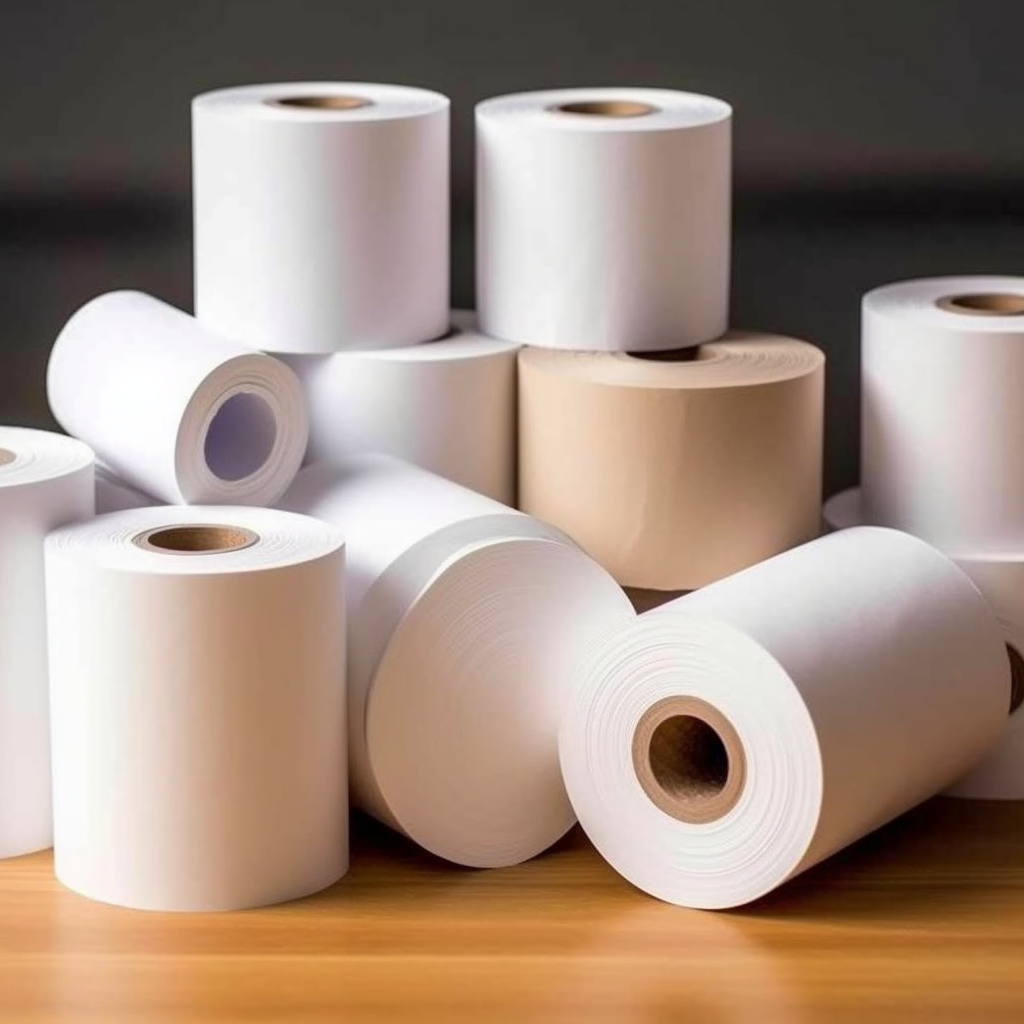
Thermal receipt paper is widely used in daily life, but many people are concerned about whether it contains toxic substances. In this article, we will explore the potential risks of thermal receipt paper and provide relevant information for your reference.
The special feature of thermal sensitive receipt paper is its printing principle. It uses chemical reactions to generate images or text without the need for traditional ink or ink cartridges. However, this also means that the chemicals in the heat-sensitive receipt paper may cause some concerns.
A common concern is bisphenol A (BPA) in the heat-sensitive receipt paper. BPA is a chemical widely used in the manufacture of plastic and thermal paper. Studies have shown that high concentrations of BPA are associated with several health problems, such as endocrine disruption, reproductive system problems, and potential cancer risk. However, there is still some controversy about the potential risks of BPA in the thermosensitive receipt paper.
Another possible potential risk is the phenolic compounds in the thermosensitive receipt paper. Phenolic compounds are often used in the coating of thermal paper to achieve printing results. However, certain phenolic compounds may pose potential risks to human health, such as allergic reactions or skin irritation.
Despite these potential risks, conclusive evidence on human health of thermosensitive receipt paper is still limited. However, some studies and government agencies have begun to focus on the chemicals in thermal sensitive receipts and take measures to limit or eliminate the use of harmful substances.
For consumers, here are some recommendations to reduce the potential risk:
Reduce exposure: minimize prolonged contact with thermal receipt paper, especially in the food and beverage sector.
Wash your washing: Wash your immediately to reduce potential skin contact.
Maintain ventilation: Ensure a well-ventilated environment when used or processed to reduce exposure to possible odors and volatiles.
Avoid heat treatment of heat sensitive receipt paper: Avoid exposing heat sensitive receipt paper to high temperature environment or direct sunlight, because this may increase the release of harmful substances.
Look for a no BPA option: If you are concerned about a BPA, choose some thermal receipt paper products marked with no BPA. These products often use alternative chemicals to replace BPA.
Attention to child exposure: Special attention to child exposure because their sensitivity to chemicals may be high. Make sure they don’t put the heat-sensitive receipt paper in their mouth.
It should be noted that while thermal receipt paper may present potential risks, proper use and appropriate protective measures can reduce potential hazards. In addition, regulatory agencies and relevant research institutions continue to evaluate and study the safety of heat sensitive receipt paper, and develop corresponding policies and guidelines.
Most importantly, we, as consumers, should be vigilant and make informed choices based on the available information. If you have doubts about the potential risks of thermal receipts, avoid contact or choose a safer alternative. At the same time, the industry is supported and encouraged to adopt more sustainable and environmentally friendly printing solutions to reduce the use of harmful substances.
NO.5 What Are Thermal Paper Receipts?
In our daily lives, we encounter various types of receipts when making purchases or transactions. One common type is thermal paper receipts, which are widely used in many businesses. But have you ever wondered what thermal paper receipts are and how they work? In this article, we will explore the basics of thermal paper receipts and their characteristics.
Thermal paper receipts are a type of receipt paper that utilizes a special chemical coating to create images when exposed to heat. Unlike traditional paper, which requires ink for printing, thermal paper uses heat to produce text, images, and other markings. The technology behind thermal paper receipts involves a chemical reaction known as thermal printing.
Thermal printing relies on a thermal printer, a device equipped with a thermal printhead. The printhead contains numerous tiny heating elements, which are selectively activated to generate heat. When the heated elements come into contact with the heat-sensitive coating on the thermal paper, it causes a reaction that creates visible marks.
There are several advantages to using thermal paper receipts. First, thermal printing is fast and efficient, making it ideal for high-volume printing situations such as retail stores, restaurants, and banks. Second, thermal paper receipts do not require ink cartridges or ribbons, resulting in cost savings and simplified maintenance. Third, the print quality of thermal paper receipts is generally clear and legible.
However, thermal paper receipts also have some limitations and considerations. One notable limitation is their sensitivity to heat, light, and environmental factors. Prolonged exposure to heat, direct sunlight, or certain chemicals can cause the thermal paper to darken prematurely, affecting the readability and longevity of the print. Additionally, thermal paper receipts are not suitable for long-term document storage, as the prints may fade over time.
In terms of recycling, thermal paper receipts can present challenges. Traditional recycling processes are not designed to handle thermal paper due to the presence of the heat-sensitive coating. While some thermal paper receipts may be recyclable through specialized recycling programs, it is important to consult local recycling guidelines or contact recycling facilities for specific instructions.
To address environmental concerns, efforts have been made to develop more sustainable alternatives to thermal paper receipts. This includes the use of eco-friendly thermal papers that minimize or eliminate harmful chemicals, as well as exploring digital receipt options to reduce paper waste.
In conclusion, thermal paper receipts are a type of receipt paper that utilizes heat-sensitive coating and thermal printing technology. They offer fast printing, cost savings, and clear print quality. However, they are sensitive to heat and environmental factors, and recycling them can be challenging. As we strive for more sustainable practices, exploring eco-friendly alternatives and adopting digital receipt options can help minimize the environmental impact of receipt printing.
